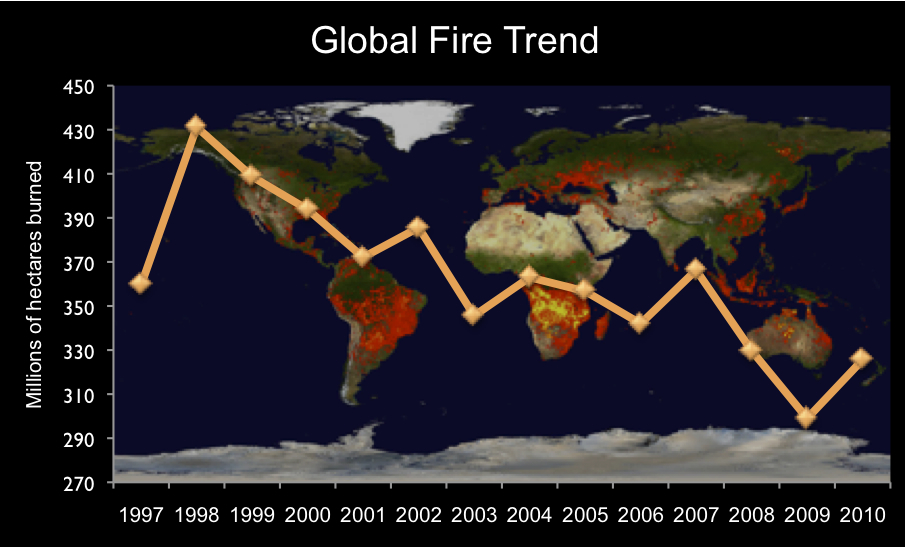[yframe url=’http://www.youtube.com/watch?v=cBHsdjPYLsk’]
By analyzing nearly a decade of satellite data, a team of scientists led by researchers from the University of California, Irvine and funded by NASA has created a model that can successfully predict the severity and geographic distribution of fires in the Amazon rain forest and the rest of South America months in advance.
Though previous research has shown that human settlement patterns are the primary factor that drives the distribution of fires in the Amazon, the new research demonstrates that environmental factors – specifically small variations in ocean temperatures – amplify human impacts and underpin much of the variability in the number of fires the region experiences from one year to the next.
“Higher than normal sea surface temperatures in the Atlantic and the Pacific proved to be red flags that a severe fire season was on its way in four to six months,” said Yang Chen, the University of California, Irvine, scientist who led the research. Chen and his colleagues found temperature changes of as little as .25°C (.45°F) in the North Atlantic and 1°C (1.8 °F) in the Central Pacific can be used to forecast the severity of the fire season across much of the Amazon.

